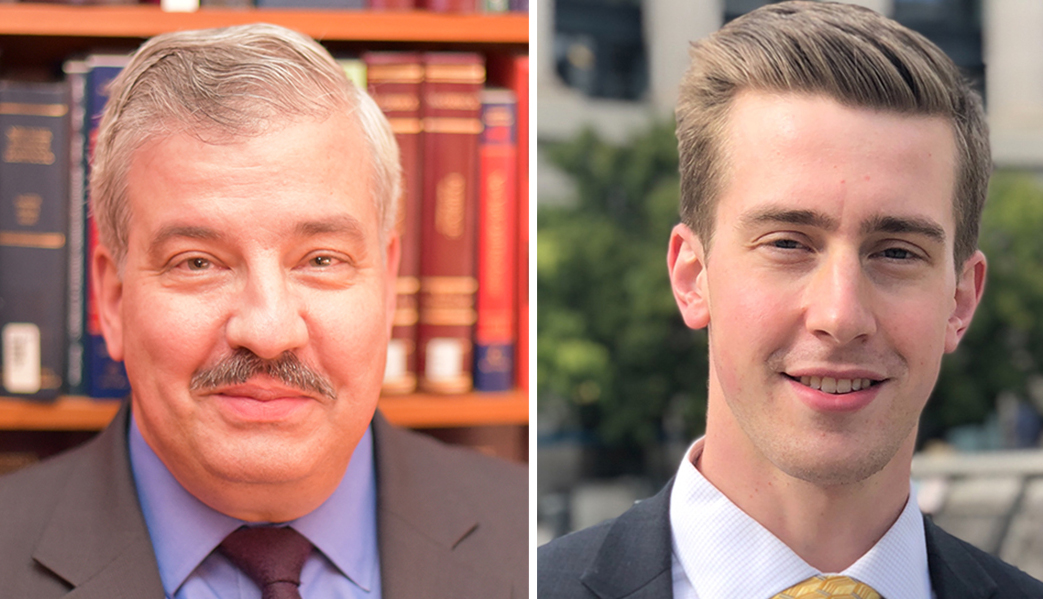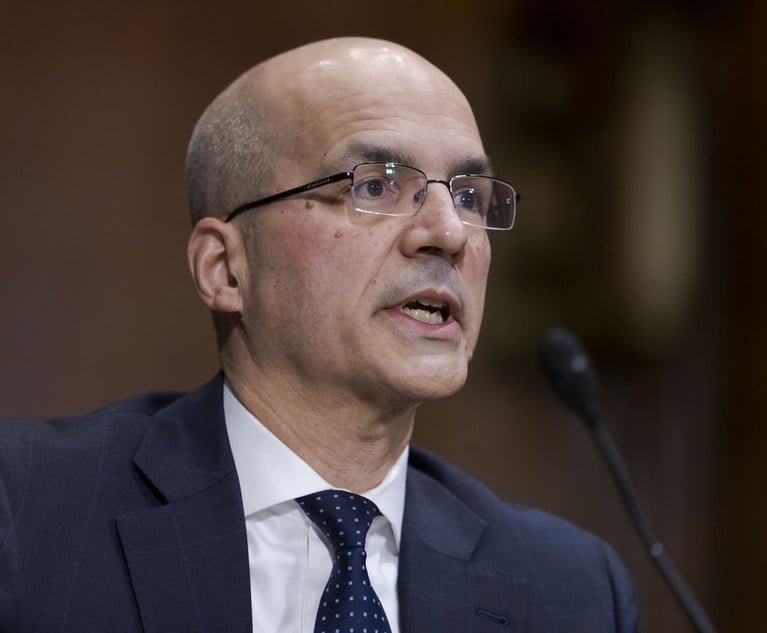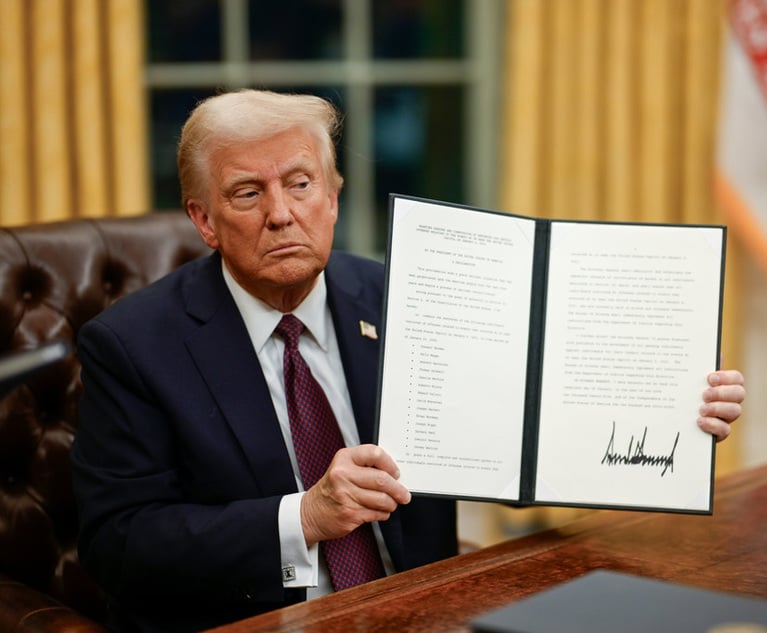New York's Credibility Problem: Part Two
In their Burden of Proof column, David Paul Horowitz and Lukas M. Horowitz discuss two cases in which the eight First Department Justices were split on whether the grants of summary judgment were justified, based upon not crediting plaintiffs' proof submitted in opposition as a matter of law, or unjustified, as an unwarranted credibility determination intruding on the function of the jury.
July 30, 2019 at 11:00 AM
14 minute read
 David Paul Horowitz and Lukas M. Horowitz
David Paul Horowitz and Lukas M. Horowitz
Part One of this column ended with an overview of the recent First Department 3-2 decision reversing the trial court's denial of summary judgment in Carthen v. Sherman. In Carthen, the majority held: “This Court is not 'required to shut its eyes to the patent falsity of a [claim]' … we conclude that plaintiff's deposition testimony was demonstrably false and should be rejected as incredible as a matter of law,” while the dissenters wrote “[t]he majority's assertion that plaintiff's testimony was 'internally contradictory' entails a credibility determination we are not empowered to make … [t]he contradictions in the testimony of the respective parties raise issues of credibility for the trier of fact to resolve.”
That same day Part One appeared, July 16, 2019, the New York Law Journal published another First Department decision, decided that day, Castro v. Hatim, 2019 NY Slip Op 05639 (1st Dep't 2019). Four Justices (Rosalyn H. Richter, Peter Tom, Marcy L. Kahn, and Peter H. Moulton), citing, inter alia, Carthen (though not on the issue of credibility determinations), affirmed the trial court's grant of summary judgment to defendant in an automobile collision case. Their affirmance came notwithstanding what the sole dissenter, Justice Presiding Dianne T. Renwick, pointed to in her dissenting memorandum—that in opposition to the motion plaintiff submitted her deposition testimony “that the rear bumper of defendants' oil tank truck struck the right side of her SUV's front bumper, when both the truck and the SUV attempted to move into the same lane.”
Interestingly, Justice Renwick was a member of the majority in Carthen.
Together, these two automobile collision cases involve a mix of different types of proof considered by the courts, and offer differing viewpoints on crediting, or not, that proof in the summary judgment context. Both dissents argue that the discrediting of proof offered in opposition to the summary judgment motions intrudes on the fact-finding role of the jury in making credibility determinations.
You can decide for yourself.
'Carthen v. Sherman'
Carthen involved an automobile collision on the Henry Hudson Parkway in Bronx County. Two vehicles were involved—the first operated by defendant Sherman, and the second operated by defendant Jackson. Plaintiff Carthen was a passenger in Jackson's vehicle. Sherman moved for summary judgment, submitting his deposition testimony, the deposition testimony of Jackson, and the police report, all of which agreed that the accident occurred when Jackson merged from the right lane into the middle lane, where Sherman's vehicle was located. Sherman also submitted his deposition testimony that when he observed Jackson's vehicle moving directly toward him, he braked and swerved away to the left. In further support of the motion, Sherman offered Carthen's deposition testimony that she did not see Sherman's vehicle until after the impact, the inference being that she did not see how the accident occurred.
The majority found that this proffer established prima facie entitlement to summary judgment based upon Jackson's violation of V.T.L. §1128(a), as well as Sherman's freedom from comparative negligence.
The majority described Carthen's opposition:
Plaintiff['s] internally contradictory deposition testimony, in which, after initially stating that she never saw the impact, she repeatedly claimed that Jackson was driving in the middle lane, and Sherman swerved into them from the right, is demonstrably false and incredible as a matter of law as it contradicts every other piece of evidence in the record indicating that Jackson moved into Sherman from the right, including photographs showing that Sherman's front right fender was damaged, which could not have occurred if, as plaintiff claimed, he had struck Jackson from the right. Those photographs are in turn corroborated by the police report, which shows damage only to Sherman's front right fender and Jackson's rear left side.
Acknowledging that credibility determinations are for the jury to resolve, the majority nonetheless voted to reverse the trial court's denial of summary judgment:
Although we agree with the dissent that as a general premise “the contradictions in the testimony of the respective parties raise issues of credibility for the trier of fact to resolve,” there are rare instances where credibility is properly determined as a matter of law … This Court is not “required to shut its eyes to the patent falsity of a [claim]” … Here, for the reasons explained before, we conclude that plaintiff's deposition testimony was demonstrably false and should be rejected as incredible as a matter of law, permitting summary judgment in favor of defendant.
The majority also dispensed with the fact that Sherman drove for two miles after the accident before stopping, which the dissent described this way: “the driver of Carthen's vehicle had to chase down defendant after the impact in order to exchange insurance information.”
Moreover, even assuming it constitutes evidence of his “consciousness of liability” … , Sherman's apparent violation of Vehicle and Traffic Law 600(1)(a) (by driving some two miles after the accident before stopping) cannot alone generate a triable issue of fact on liability, particularly, where all of the credible direct evidence—testimonial and photographic—establishes that he was free from fault in causing the accident … [criminal conviction for violation of § 600 does not ipso facto “establish proximate causation in accordance with the principles applicable to the law of torts”].
In a memorandum written by Justice Sallie Manzanet-Daniels, the dissent succinctly made its case:
Plaintiff's testimony that defendant “cut us off” and “sideswiped” the car in which she was a passenger and “hit the rear,” in my view, suffices to raise a triable issue of fact warranting trial. The majority's assertion that plaintiff's testimony was “internally contradictory” entails a credibility determination we are not empowered to make. The EBT transcript is, admittedly, confusing, with time frames being unclear and even the distinction between “left” and “right” at times muddied. Thus, while defendant alights on isolated testimony that plaintiff did not see defendant's vehicle prior to impact, plaintiff also unequivocally testified that defendant cut off the vehicle in which she was traveling. She testified that the driver of her vehicle was not in the process of switching lanes when the vehicle was hit, in direct contradistinction to the account of defendant driver. Indeed, the fact that the driver of her vehicle had to chase down defendant after the impact in order to exchange insurance information arguably undercuts defendant's assertions concerning culpability for the accident. The contradictions in the testimony of the respective parties raise issues of credibility for the trier of fact to resolve.
'Castro v. Hatim'
In Castro, a defendant's truck and plaintiff's car collided on Bruckner Boulevard in Bronx County. Affirming the trial court's grant of summary judgment, the majority summarized its determination: “The photographic evidence shows that plaintiff's SUV struck the rear of defendants' tractor-trailer as plaintiff was attempting to merge into defendants' truck's lane of traffic. Thus, plaintiff violated her 'duty not to enter a lane of moving traffic until it was safe to do so' … 'and [her] failure to heed this duty constitutes negligence per se.'”
In finding defendant established prima facie entitlement to summary judgment, a determination the dissent agreed with, the majority marshaled the evidence this way:
The testimony of the driver of defendants' truck was that defendants' truck was wholly within lane four proceeding straight at the moment of the collision. Plaintiff's testimony, however, was that shortly before the collision, she had observed, through her right side view mirror, defendants' truck and other vehicles approaching on her right while her SUV was standing still between lanes five and four as she was trying to enter lane four. She further testified that she saw the truck move from the third lane from the curb (lane three) into lane four and that, at the moment of the collision, the truck passed her SUV, hitting the front passenger side of her SUV with the rear driver side portion of the truck as she tried to enter lane four.
The majority offered its take on plaintiff's testimony proffered in opposition:
And although our dissenting colleague finds plaintiff's testimony to be plausible, it is refuted by the positions of the two vehicles as depicted in the photographs, which, as plaintiff has conceded, were taken immediately following the accident and after the truck had moved “not far” from the location of the impact before coming to a stop. The photographs depict the truck as wholly within lane four with its wheels aligned within the lane markers and plaintiff's SUV as positioned behind the truck, straddling lanes four and five with its damaged front passenger side aligned with the driver's side of the rear bumper of the truck. In order for the vehicles to be positioned in this manner, plaintiff's SUV would have to have been moving into lane four after the truck had already moved forward within that lane, nearly entirely passing plaintiff's vehicle. Thus, these photographs clearly demonstrate that the front passenger side of plaintiff's SUV struck the driver's side rear bumper of defendants' truck while plaintiff was moving her SUV into lane four, and that plaintiff moved her SUV into the truck's lane at a time when she could not do so with safety, namely, after the truck had already started to pass her SUV. By the foregoing, defendants have made out a prima facie showing of entitlement to summary judgment based upon plaintiff's violation of Vehicle and Traffic Law §1128(a).
The majority disagreed with the dissent's analysis of the plaintiff's proof, and explained why it “disregarded” plaintiff's testimony:
Furthermore, in summary judgment analysis, we must discount the plaintiff's testimony where the plaintiff has “relied solely on [her] own testimony, uncorroborated by any other witnesses or evidence,” and her testimony belied “common sense” … As these circumstances are presented in this case, plaintiff's testimony was properly “disregarded as being without evidentiary value” … Thus, plaintiff's testimony raised no triable issues of fact.
The majority expressed its opinion about two key facets of plaintiff's testimony: “With respect to plaintiff's testimony that the oil tanker truck was moving faster than her vehicle, which the opposing writing credits, that testimony establishes as a matter of law that plaintiff should not have entered lane four at that time, as she could not have done so with safety … In any event, attempting to cross six lanes of traffic on what our dissenting colleague terms 'one of the most hectic roadways in New York City' without due care is inherently risky and dangerous, and renders plaintiff solely liable.”
In dissent, Justice Renwick took issue with the majority's determination that “plaintiff's testimony was 'directly contradicted by the photographs' of the scene of the accident and thus must be 'disregarded as being without evidentiary value.'” “I respectfully dissent because, in my view, the question of whether the accident occurred as defendant described, or whether it occurred as plaintiff described, is a classic factual dispute.”
Addressing the critical evidence relied on by the majority, Justice Renwick pointed out “there is a genuine dispute as to whether photographs, which do not depict the collision, irrefutably rebut plaintiff's version of events leading up to and including the point of collision, particularly where defendants have proffered no affidavit from an expert accident reconstructionist on this motion for summary judgment on liability.”
The photographs were equally critical to Justice Renwick's evaluation of the evidence:
Contrary to the majority's conclusions, the photographs do not unequivocally demonstrate plaintiff's version of the accident to be clearly and patently false. First, the condition of the SUV, as shown in the photographs, did not render plaintiff's version of the accident implausible and incredible. To the contrary, the damage to plaintiff's SUV is fully consistent with plaintiff's testimony that the oil tank truck, proceeding faster than she to reach lane four, swiped the front corner of plaintiff's SUV with its rear, breaking the SUV's right front light and ripping off the SUV's bumper on the right. In contrast, it is far less plausible that a partially detached bumper would result from a mild head-on collision, as defendant driver described it.
Second, the photographs fail to conclusively establish the position of the vehicles either immediately before or at the moment of impact. The majority relies heavily on plaintiff's testimony, on cross examination, that the photographs indicated the “post-accident location,” as conclusive evidence that defendant was lawfully operating his vehicle within his own lane of traffic, and that plaintiff's vehicle entered his lane of traffic and collided with his truck. However, plaintiff testified that the photographs were “a fair and accurate representation of the location of the vehicles immediately following the accident,” and not the position of the vehicles either immediately before or at the moment of impact, as the majority suggests. At best, the photographs show nothing more than where the oil tank truck chose to stop after the accident, as the truck is several feet away from the SUV and not in the position it was when it connected with the right front of plaintiff's SUV. Thus, contrary to the majority's conclusion, the photographic evidence does not conclusively establish that plaintiff's vehicle struck the rear of defendant's truck as she was merging into its lane of traffic. Nor does it establish that defendant did not switch from lane three to lane four prior to the accident. Instead, the photographic evidence raises a classic dispute as to the exact location of the vehicles at the time of the accident and the cause of the accident.
Acknowledging “plaintiff's testimony might have inconsistencies,” Justice Renwick concluded “it did not, as the majority asserts, defy 'common sense' as to how the accident occurred. Plaintiff's testimony was not riddled with inconsistencies. Nor did defendant's testimony make out plaintiff's testimony to be manifestly untrue or physically impossible … plaintiff's testimony supports an inference that the accident happened as she described, when both vehicles, the oil tank truck moving faster, were simultaneously intending to enter lane four from opposite directions and that, under the circumstances, defendant driver contributed to the happening of the accident.”
Justice Renwick concluded: “The descriptions of the accident given by plaintiff and defendant, herein, are at odds. Given the circumstances of this case, it is for the jury, as the trier of fact, to weigh, determine, and resolve issues of fact at trial, and not for this Court.”
Conclusion
If you are keeping score at home, in Carthen and Castro there were seven votes to support the grant of summary judgment to the defendant vehicles, with three votes against. Only two Justices, Dianne T. Renwick and Marcy L. Kahn, were on both panels. And an argument can be made that Justice Renwick's dissent in Castro trumps her vote in Carthen. However you score it, the eight First Department Justices were split on whether the grants of summary judgment were justified, based upon not crediting plaintiffs' proof submitted in opposition as a matter of law, or unjustified, as an unwarranted credibility determination intruding on the function of the jury.
Which way would you vote?
David Paul Horowitz is a member of McNamara & Horowitz in New York City, Lecturer at Law at Columbia Law School, and serves as a legal malpractice expert, private arbitrator, mediator, and discovery referee. He can be reached at [email protected]. Lukas M. Horowitz is a 2019 graduate of Albany Law School.
This content has been archived. It is available through our partners, LexisNexis® and Bloomberg Law.
To view this content, please continue to their sites.
Not a Lexis Subscriber?
Subscribe Now
Not a Bloomberg Law Subscriber?
Subscribe Now
NOT FOR REPRINT
© 2025 ALM Global, LLC, All Rights Reserved. Request academic re-use from www.copyright.com. All other uses, submit a request to [email protected]. For more information visit Asset & Logo Licensing.
You Might Like
View All
'Serious Legal Errors'?: Rival League May Appeal Following Dismissal of Soccer Antitrust Case
6 minute read
How Some Elite Law Firms Are Growing Equity Partner Ranks Faster Than Others
4 minute read
Trending Stories
- 1GOP-Led SEC Tightens Control Over Enforcement Investigations, Lawyers Say
- 2Transgender Care Fight Targets More Adults as Georgia, Other States Weigh Laws
- 3Roundup Special Master's Report Recommends Lead Counsel Get $0 in Common Benefit Fees
- 4Georgia Justices Urged to Revive Malpractice Suit Against Retired Barnes & Thornburg Atty
- 5How Gibson Dunn Lawyers Helped Assemble the LA FireAid Benefit Concert in 'Extreme' Time Crunch
Who Got The Work
J. Brugh Lower of Gibbons has entered an appearance for industrial equipment supplier Devco Corporation in a pending trademark infringement lawsuit. The suit, accusing the defendant of selling knock-off Graco products, was filed Dec. 18 in New Jersey District Court by Rivkin Radler on behalf of Graco Inc. and Graco Minnesota. The case, assigned to U.S. District Judge Zahid N. Quraishi, is 3:24-cv-11294, Graco Inc. et al v. Devco Corporation.
Who Got The Work
Rebecca Maller-Stein and Kent A. Yalowitz of Arnold & Porter Kaye Scholer have entered their appearances for Hanaco Venture Capital and its executives, Lior Prosor and David Frankel, in a pending securities lawsuit. The action, filed on Dec. 24 in New York Southern District Court by Zell, Aron & Co. on behalf of Goldeneye Advisors, accuses the defendants of negligently and fraudulently managing the plaintiff's $1 million investment. The case, assigned to U.S. District Judge Vernon S. Broderick, is 1:24-cv-09918, Goldeneye Advisors, LLC v. Hanaco Venture Capital, Ltd. et al.
Who Got The Work
Attorneys from A&O Shearman has stepped in as defense counsel for Toronto-Dominion Bank and other defendants in a pending securities class action. The suit, filed Dec. 11 in New York Southern District Court by Bleichmar Fonti & Auld, accuses the defendants of concealing the bank's 'pervasive' deficiencies in regards to its compliance with the Bank Secrecy Act and the quality of its anti-money laundering controls. The case, assigned to U.S. District Judge Arun Subramanian, is 1:24-cv-09445, Gonzalez v. The Toronto-Dominion Bank et al.
Who Got The Work
Crown Castle International, a Pennsylvania company providing shared communications infrastructure, has turned to Luke D. Wolf of Gordon Rees Scully Mansukhani to fend off a pending breach-of-contract lawsuit. The court action, filed Nov. 25 in Michigan Eastern District Court by Hooper Hathaway PC on behalf of The Town Residences LLC, accuses Crown Castle of failing to transfer approximately $30,000 in utility payments from T-Mobile in breach of a roof-top lease and assignment agreement. The case, assigned to U.S. District Judge Susan K. Declercq, is 2:24-cv-13131, The Town Residences LLC v. T-Mobile US, Inc. et al.
Who Got The Work
Wilfred P. Coronato and Daniel M. Schwartz of McCarter & English have stepped in as defense counsel to Electrolux Home Products Inc. in a pending product liability lawsuit. The court action, filed Nov. 26 in New York Eastern District Court by Poulos Lopiccolo PC and Nagel Rice LLP on behalf of David Stern, alleges that the defendant's refrigerators’ drawers and shelving repeatedly break and fall apart within months after purchase. The case, assigned to U.S. District Judge Joan M. Azrack, is 2:24-cv-08204, Stern v. Electrolux Home Products, Inc.
Featured Firms
Law Offices of Gary Martin Hays & Associates, P.C.
(470) 294-1674
Law Offices of Mark E. Salomone
(857) 444-6468
Smith & Hassler
(713) 739-1250







